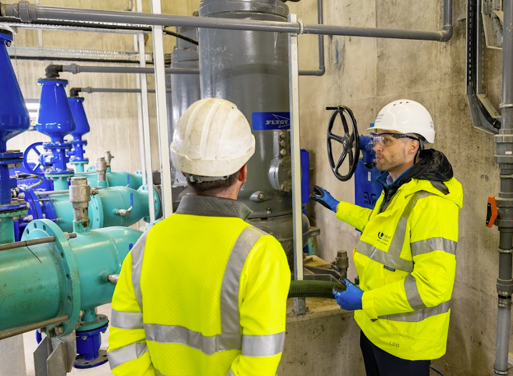Action Windermere
 Windermere is a unique and iconic water body for the North West. It is nationally significant as the largest lake in England, a UNESCO world heritage site and supports a thriving local economy, attracting 7 million visitors a year, generating over £750 million in economic impact.
Windermere is a unique and iconic water body for the North West. It is nationally significant as the largest lake in England, a UNESCO world heritage site and supports a thriving local economy, attracting 7 million visitors a year, generating over £750 million in economic impact.
We know that the lake is suffering from algal blooms brought on the by the changing climate and increasing temperature of the water.
Windermere also has a long history of phosphorus inputs into the lake and, like all lakes, its condition has altered over time and we have a part to play in this.
There are 103 discharge permits which allow discharges into the lake or small rivers that flow into it; 23% of those permits are United Utilities’ responsibility, with the remaining 77% owned by other third parties.
That means partnership working is key to improving water quality in Windermere as no single organisation can address the concerns about its health.
What is United Utilities doing about it?
We have already made significant investments and have further activities planned:
- In 2020, we completed a £45m upgrade at Windermere wastewater treatment works, the largest in the catchment, installing technology to treat wastewater to the highest achievable standards.
- We are fast-tracking £41m investment, including £19m in the next two years to reduce spills at 4 storm overflows
- United Utilities is part of the Love Windermere partnership led by the Environment Agency and including Cumbria LEP, Freshwater Biological Association, Lake District Foundation, Lake District National Park Authority, National Farmers Union, National Trust, South Cumbria Rivers Trust and Westmorland and District Authority. The partnership, the largest ever co-operation of sectors to tackle challenges in the lake, is developing a science-based plan to set out a road map for environmental protection.
- We’re supporting 12 months of harnessing citizen science: ‘Big Windermere Survey’ led by the Freshwater Biological Association and Lancaster University is developing a scientific and academically based picture of its water quality, with results from latest survey on 23/04/23 expected in June
- Hosting drop-in sessions, so people can meet and ask questions, giving stakeholders the opportunity to have a peek behind the scenes at operational sites, creating and sharing material on what UU is doing at speakers’ events, alongside a plan to open a visitor centre to have a more visible high street presence in the local community, staffed by our colleagues who live and work there and who want to share their passion for the environment.
£19 million investment boost
Doing more and sooner at Windermere - our fast-tracked work will see us enhance four of our treatment works, along with the associated infrastructure
These steps will reduce the amount of phosphorus entering the lake which in turn restricts algae growth, stabilising oxygen levels and allowing fish and other aquatic lift to thrive.
Phosphorus levels in the lake are reducing – we've halved the amount of phosphate entering the lake from our sites since 2015 and the steps we are taking next will bring those down further.
But what does this really mean for the water quality of Lake Windermere, your community and even your home? Ultimately, we’re working towards:
- Avoiding floods and damage in our community
- Achieving essential environmental goals
- Protecting our wildlife
- Enhancing the recreational value of lake
- Boosting local economy and tourism
What have we previously invested?
On top of the additional £19m investment to be spent over the next two years, over the last five years we have:
- Introduced larger capacity pipes to cope with extra development in the area
- Upgraded water treatment works and utilised the latest treatment technology
- Halved the amount of phosphorus entering Windermere from our sites since 2015
- Delivered a 15% reduction in the amount of phosphorus entering Windermere from wastewater treatment, improving water quality and by using industry leading treatment capability
- Increased capacity of the sewer to Tower Wood, which has reduced spill numbers from over 200 to less than 30, further reducing impact on the environment and water quality
Installing a network of high-tech sensors to prevent sewer blockages
Sewer blockages are a threat to water quality at Windermere.
Our underground network of 133 digital sensors uses real-time data and AI to help us quickly identify issues on a 24/7 basis, so our teams can act fast before a blockage becomes an issue and overflows into Windermere’s watercourses.
By sending our teams to the right places at the right times, we’re protecting the environment, homes and businesses from disruption, inconvenience and damage.
Boosting boots on the ground
We have recruited dedicated River Rangers who will be devoted to protecting and preserving the environment around our waters.
- More people on the ground to spot and tackle issues at the source.
- Our new River Rangers will lead the charge in clearing debris out of our waters after storms, taking water samples, undertaking clean-ups to keep watercourses and banks free of litter and debris.